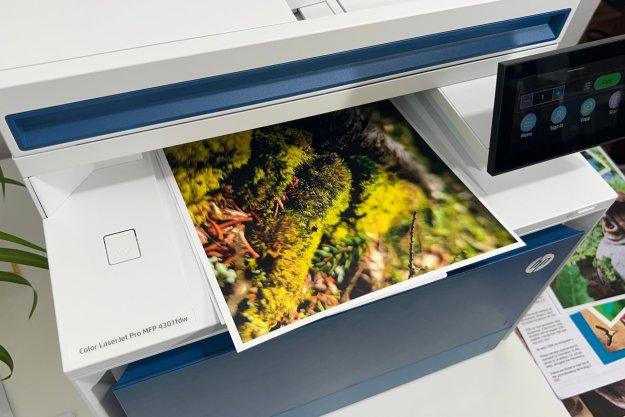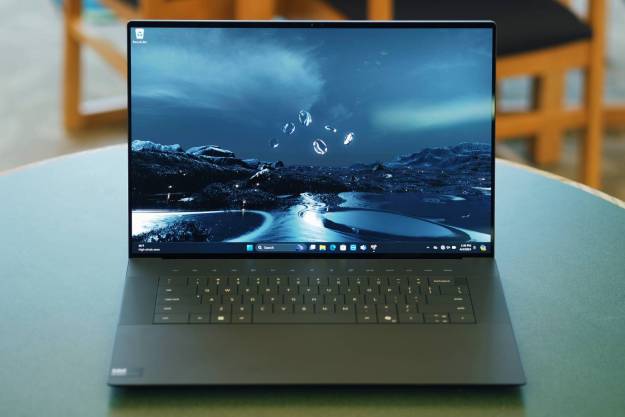- Respectable performance; sleek shell and AlienFX lighting deliver fine gaming style; handy gaming utilities come pre-installed; low price
- Few perks; optional upgrades can really boost the price; struggles with higher graphics settings
Summary
While pricey gaming rigs from the likes of Alienware and HP’s Voodoo unit often grab headlines, these machines are well out of reach for most consumers. Thank goodness for systems like Dell’s affordable and stylish XPS 625, which demonstrates that you can still get solid gaming performance for around a thousand dollars. This desktop strips away most frivolities—after all, liquid cooling systems and tool-less interiors are agreeable but expensive perks—and just sticks to the essential hardware necessary to run the latest games with aplomb. And, as an added bonus, it looks pretty slick to boot.

It wasn’t that long ago that the most visual panache you could expect from a thousand-dollar box was that it wouldn’t be a plain beige or black metal cube. Dell’s economical and attractive XPS 625 shows just how far we’ve come.
The system has a pleasantly minimal design, featuring a smooth, brushed aluminum chassis with the consumer’s choice of either black or red grills. Meanwhile, AlienFX lighting—in the form of individually customizable LED panels that shine downward to illuminate both the front and back jack suites—ensures that onlookers know this rig’s raison d’être is gaming.
A lockable lever atop the case pops open the side panel, providing quick access to the machine’s well organized guts. Installation of certain boards and drives will require a screwdriver (Dell’s designers decided to eschew, for the most part, the cute, tool-less solutions seen in pricier rigs), but all of the cables are neatly sheathed in black fibrous tubing, which keeps clutter to a minimum and ought to make upgrading fairly painless.
Hardware
Dell’s goal with the XPS 625 wasn’t to overwhelm with extras such as liquid cooling, Blu-ray drives, or discrete sound, but rather deliver a cheap rig that runs games well, and they did this by focusing on the three components that are key to gaming performance: the CPU, the GPU, and RAM. The options they’ve provided in these categories aren’t exactly cutting-edge, but they’re more than enough to let consumers run the latest games with impressive visual detail.

Moving to graphics, our machine came with a single ATI Radeon HD4850 with 512 MB of discrete RAM. Dell also offers a pair of dual-card solutions via ATI’s CrossFireX protocol—you can choose two HD4850s or a couple of HD4670s—but, again, that will add $200 to $250 to the rig’s price. Besides which, a single HD4850 is all that’s needed to run any game available at the time of this writing with most visual settings at medium or high.
As for memory, our unit had 2 GB of RAM running at 800 MHz, which is on the unspectacular side—especially for gaming. This is the one component that even price-conscious XPS buyers might consider upgrading. Three gigs will add just $40 to the machine’s price, while 4 GB runs an extra $75. Unless you’re a RAM freak (in which case the XPS 625 probably isn’t the sort of machine you’re likely to consider), it’s probably not worth shelling out the extra $200 to $400 required for the Corsair Dominator memory Dell offers as an option.

We conducted three informal game performance tests using Sierra’s World in Conflict, Activision’s Call of Duty: World at War, and Crytek’s Crysis: Warhead.
World in Conflict, a graphically complex strategy game, ran at a quick 40 frames per second with visual settings set to medium and at a resolution of 1680×1050. We even managed to eke out a respectable 30 frames per second on high visual settings with DirectX 10 enabled. It failed miserably—just three frames per second—when we set graphics to very high and jacked the resolution up to 1920×1200, but, to be fair, we’ve seen $5,000 rigs that couldn’t hack this game with all visual settings at maximum.
Call of Duty: World at War, meanwhile, hummed along perfectly at a resolution of 1920×1200 and with most graphics settings maxed. We didn’t notice a single visual hiccup while playing through the game’s first two levels.
Crysis: Warhead, on the other hand, required a bit of tinkering. We achieved a playable frame rate with a mixture of medium and high settings and a relatively modest resolution of 1280×768. It’s a shame not to be able to crank the graphics up on this gorgeous game, but one doesn’t expect to run Crysis: Warhead—one of the most visually sophisticated shooters ever made—at full steam without a pair of top-of-the-line cards and lots of speedy memory, which will jack up the cost of any machine to a couple grand or more. Besides, the title still looked pretty running at medium settings on the XPS 625.

Understanding that game geeks like to keep tabs on their system, Dell included a handy Thermal Monitor utility that tracks HDD and PCI cage fan usage and speed as well as the temperature at both the front and back of the box. If you happen to be particularly focused on any of these numbers you can pop them out of the app and keep them as permanent gadgets on your desktop—a nice touch.
The XPS 625 also features a pair of AMD utilities meant to improve performance. The first, called Overdrive, is a simple application that lets users overclock their CPUs without diving into the BIOS. One wonders about the wisdom of making overclocking simple enough of an operation that anyone can do it (novices might crank up their processor speeds and just leave them there), but it’s certainly a boon for hardware enthusiasts.
AMD’s other app is called Fusion for Gaming. In a nutshell, it shuts down all but essential Windows Vista processes, ensuring that maximum processor cycles are devoted to your game. This utility ought to be welcomed by anyone who has complained about Vista’s glutton-like behavior adversely affecting gaming performance.

One of the advantages desktops continue to hold over laptops is their generous helping of inputs and outputs, and Dell’s tower is no exception. With no less than eight USB ports—two on the front, six on the back—a pair of FireWire ports, and an eSATA jack, there’s little chance that you’ll ever run out of ports for your peripherals and external storage.
Other ports on the back include a standard suite of audio I/Os, a pair of DVI outputs to facilitate dual-monitor setups, and the ubiquitous Ethernet jack. There’s no onboard Wi-Fi, but Dell offers Killer NIC’s K1 Network Gaming Card as an option for online gamers who want to squeeze as much data as quickly as possible out of their networks—though it’ll add an extra $150 to the build.
Headset-wearing gamers will also appreciate the handy secondary mic and headphone jacks on the front panel.

Dell XPS 625 Ports
Conclusion
As cheap gaming towers go, the XPS 625 is hard to beat. Our test rig had nice style, respectable hardware, and some handy utilities gamers are sure to appreciate, all for just $1,099. What’s more, Dell offers an even less expensive default build with a single ATI Radeon HD4670 that sells for just $999. A word to the wise: If you manage to find a decent gaming rig for much less, you should probably start running, because the police will likely think you stole it.

- Respectable—if not bar-setting—performance
- Sleek silver shell and AlienFX lighting deliver good gaming style
- Several handy gaming utilities come pre-installed
- Low price means you’ll have lots of cash left over for software
Cons:
- Few perks
- Optional add-ons and upgrades can really boost the price
- Struggles noticeably with the higher graphics settings of visually sophisticated games
Editors' Recommendations
- The 10 best monitors for 2024: tested and reviewed
- 9 best 2-in-1 laptops in 2024: tested and reviewed
- 9 best processors for PC gaming: tested and reviewed
- Best 14-inch laptops for 2024: tested and reviewed
- 10 best gaming monitors of 2024: tested and reviewed






